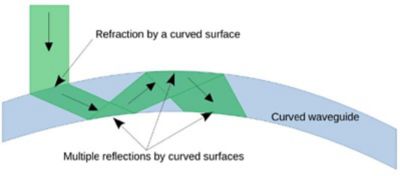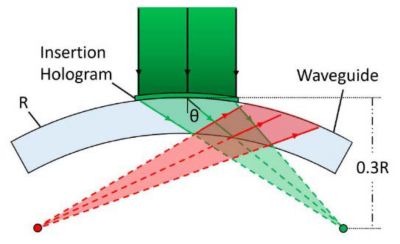Case Study
-
United States -
United Kingdom -
India -
France -
Deutschland -
Italia -
日本 -
대한민국 -
中国 -
台灣
-
Ansys si impegna a fare in modo che gli studenti di oggi abbiano successo, fornendogli il software gratuito di simulazione ingegneristica.
-
Ansys si impegna a fare in modo che gli studenti di oggi abbiano successo, fornendogli il software gratuito di simulazione ingegneristica.
-
Ansys si impegna a fare in modo che gli studenti di oggi abbiano successo, fornendogli il software gratuito di simulazione ingegneristica.
-
Contattaci -
Opportunità di lavoro -
Studenti e Accademici -
Per Stati Uniti e Canada
+1 844.462.6797
“Ansys Zemax OpticStudio played an essential role in helping us prove the capabilities of a highly practical new waveguide system, and to design a model that is ready to implement for a variety of manufacturing scenarios.”
— Pierre-Alexandre Blanche / Research Professor University of Arizona, Wyant College of Optical Sciences
Emerging technology markets continue to provide opportunities for innovation in waveguide optics, in which electromagnetic waves in the optical spectrum are restricted and guided through a device to produce various kinds of transmission for optical systems. Augmented reality (AR) systems, such as those in wearable devices or head-up displays (HUD), commonly use fabricated holographic optical elements (HOEs) to couple light into the waveguides they use for transporting light from the display engine to the user’s eye. The result is an increasingly realistic user immersion into holographic AR space, where virtual information is visually overlaid onto the natural world.
Challenges
Holographic waveguides are an ideal combiner type for use in HUD because they can provide a larger eye box while preserving the field of view (FOV). This is something other combiner types have difficulties achieving. To date, most commercially successful holographic waveguides use flat surfaces for interfacing with the user. Curved surfaces would be more desirable — think of an AR helmet, for example, that conforms more closely to the user’s head to provide maximum FOV. But with waveguide design, curving the holographic projection introduces aberrations to the image, so designing a curved combiner for HUD and AR becomes much more challenging.
The physical requirements of near-to-eye display (NED) systems further adds to this complexity. In an NED system, the physical footprint must be lightweight enough to support ease of wearability while still containing essential components. Pupil replicating combiners help reduce the projection component and overall footprint, but pupil replication in optical systems has also traditionally been limited to flat waveguides only.

Light propagation schematic in the curved waveguide, showing the various interactions with curved surfaces susceptible to induces image aberrations

Insertion hologram geometric correction, showing the induced sagittal ray focus (in green) and the resulting virtual focus off total internal reflection off the waveguide surface (in red)
Engineering Solution
Using OpticStudio, an optical system that verifies the use of a curved waveguide as a combiner through propagation correction using HOEs was designed. Light is focused and expanded through the waveguide to provide a quasi-collimated state within the waveguide, where curved waveguide propagation and image extraction is minimally aberrated and within parameters that are highly suitable for commercial AR device production.
Pupil replication through HOEs use an insertion hologram to propagate light at total internal reflection conditions. This light reaches an extraction hologram, which corrects the outcoupled light so that the viewer sees it as a single image. For their curved waveguide design, balancing the way light expanded and focused as it was propagated through the waveguide and interacted with the system’s top and bottom surfaces was important. When this balance was achieved, the extraction hologram could be manipulated to outcouple the light in a way that produced minimal aberrations on a curved piece of glass.
Benefits
- Simulation of pre-distorted images for predictive correction.
- Ray tracing of holographic optical elements that correct the image resolution.
- Coupled-wave analysis of image diffraction to optimize the system prior to building.

Example HUD image as seen projected onto a curved windshield through the corrected waveguide (a) versus an uncorrected waveguide (b) which yields image duplication of 2.4 degrees
Cominciamo
Se devi affrontare sfide di progettazione, il nostro team è a tua disposizione per assisterti. Con una vasta esperienza e un impegno per l'innovazione, ti invitiamo a contattarci. Collaboriamo per trasformare i tuoi ostacoli ingegneristici in opportunità di crescita e successo. Contattaci oggi stesso per iniziare la conversazione.










